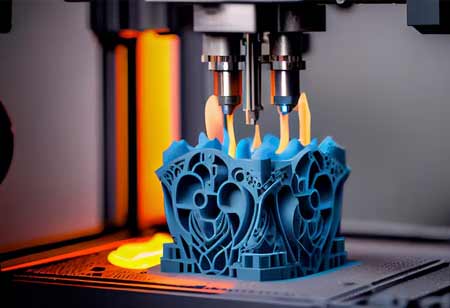FREMONT, CA: The chemical industry is transforming as 3D printing advances enable the precise, efficient creation of complex, customised products, revamping research, development, and production. The growth of 3D printing in the chemical industry is driven by three primary factors: decreasing costs, increasing speeds, and a more comprehensive range of materials available for use.
As raw material costs decrease and competitive pressures rise, 3D printing becomes more cost-effective. Technological advancements have also significantly increased printing speeds, making production more efficient. Additionally, the development of new 3D printers allows for a broader array of materials, such as polymers, resins, and plasticisers, to be used in creating products. These advancements provide the chemical industry with opportunities for innovation and increased efficiency.
The impact of 3D printing on the chemical industry is already evident, particularly in research and development (R&D) and manufacturing. The ability to create new feedstocks and materials has opened new avenues for revenue. While conventional manufacturing uses thousands of materials, only a few are suitable for 3D printing. The market for chemical powder materials is expected to grow significantly as 3D printing applications expand. Materials like plastics, resins, and metal powders are already used to create prototypes and complex parts. Continued innovations in material development will likely result in a broader range of materials available for 3D printing, further enhancing its potential.
The chemical industry is also actively developing processes to optimise 3D printing. Various deposition techniques, such as melting thermoplastics or chemical reactions, are employed to create finished products. The choice of feed material plays a crucial role in the printing process's success and the final product's quality. Innovations in materials and processes contribute to the growing potential of 3D printing in manufacturing and R&D applications.
In R&D and operations, 3D printing offers new tools for improving efficiency. Traditional laboratory equipment used in chemical synthesis is often expensive and complex, but 3D printing allows for the creation of miniaturised fluidic reactors for organic chemical syntheses. These micro-reactors, created from inexpensive materials, can be printed in just a few hours and used for synthesising molecules or breaking down molecular structures. In manufacturing, 3D printers can also be used for maintenance, allowing for the quick production of replacement parts and reducing downtime.
From a commercial standpoint, 3D printing offers various benefits across industries. It can reduce supply chain costs, improve asset uptime, and lower waste by using only the required material in production. This additive process contrasts with traditional subtractive manufacturing, which removes excess raw material. 3D printing also accelerates the design cycle, enabling faster prototype development and reducing time to market. The ability to produce parts on demand eliminates costly inventory and reduces the need for storage space. As these efficiencies unfold, 3D printing is poised to create significant savings for industries, further driving its adoption.
The ability to create customised chemical products, optimise R&D tools, and streamline manufacturing processes presents significant commercial advantages, from reducing waste to improving supply chain logistics. As technology evolves, the chemical industry benefits from increased innovation, sustainability, and operational agility, positioning 3D printing as a critical driver of future growth and transformation in the sector.

